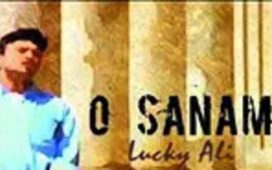
Is it pasta-de Nadal – a pasta liked by the tennis maestro? I started reading the phrase ‘Pastel de Nata‘ in a couple of British food columns. I still wasn’t paying attention, so I continued to think this PdN was a) Spanish, b) a savoury. Then I read some descriptions that identified it as ‘a sweedish item’, as my school mess manager used to call desserts and puddings. Finally, I understood that this ‘Swedish’ item was Portuguese.
Last year in Oxford, I saw something called a pasteleria – Portuguese for bakery – had opened, and there was a long queue outside. Walking past it one day, I saw the queue wasn’t there so I leapt in. ‘Hi, can I please have one of those…?’
‘It’s called pastel de Na’a, sir. How many would you like?’
‘Oh, just the one, please.’
‘Just one? Oooo-kkkay.’He tonged a small round thing onto a plate, an object that looked like a cheese puff from Kathleen’s in Kolkata, only made by a very stingy, miniaturist puff-chef. ‘That’ll be £2, thank you.’I brought the thing to my mouth, intending to bite it into half. It disappeared down my gullet before I could stop, leaving a memory of something crisp cracking and a warm wake of high-end custard. A few days later, I spent another two quid, and this time, the biting into half was successful, and I understood that it was the main point in eating one of these – to feel the slightly blackened salty pastry pull apart under your teeth and then to capture the ooze of the custard on to your tongue.
‘Ah, you’re going to Lisbon for the first time? The home of Pastel de Nata! You must try them there,’ said a friend. I like to think of myself as meticulous in these matters. So, I read up on where you could get the best PdNs. Then, another friend sent me a photo of what looked like a hole in a very old pink-coloured wall going up a steep cobblestone lane. Above the opening was a name carved into a marble plaque. ‘Just go to this pasteleria. Ignore all others.’ I stored this away in the dossier.
My friends, expats who had recently arrived in Portugal, met me at the metro station, their two small daughters jumping up and down in greeting. We went to a park that had a cafe. The husband-host, a Punjabi, asked me, ‘Yeh unka pastel de voh khaya hai kabhi?’ The wife-host, American but fluent in North Delhiese, said, ‘Mainey order kiya hai. You can try, but it’s a bit sweet.’
The coffee arrived, with two proper-sized PdNs. I took a bite. It was quite nice, pastry flaky and all, but sweet. I put a half down on the plate and looked at something in the park. In the corner of my eye, I could see the younger of my host-daughters reaching for the half. The next day, I tried another competitor. My host-husband also had a bite. ‘Iska crust, na, bahaut thhos hai.’ I agreed.
A couple of days later, host-h and I found ourselves competing to use Google Maps in the lanes of the area called Allfama. We were trying to locate the hole in a wall my other friend recommended. Finally, after much steep climbing and showing self-control in front of little bars and eateries, we found it.
A cool-looking older Chinese guy was sitting on a stool outside, smoking a cigarette. He smiled when we asked him about the Pastel de Nata in the shop. ‘He’s the one who makes them!’ laughed his daughter. ‘He’s just finished a batch!’
She served us two beautiful-looking tarts. They were superb: the custard had depth without being too sweet. The pastry was as flaky as desirable. And the crust and toppings were burnt just the right amount. Peak Pastel had been reached.









